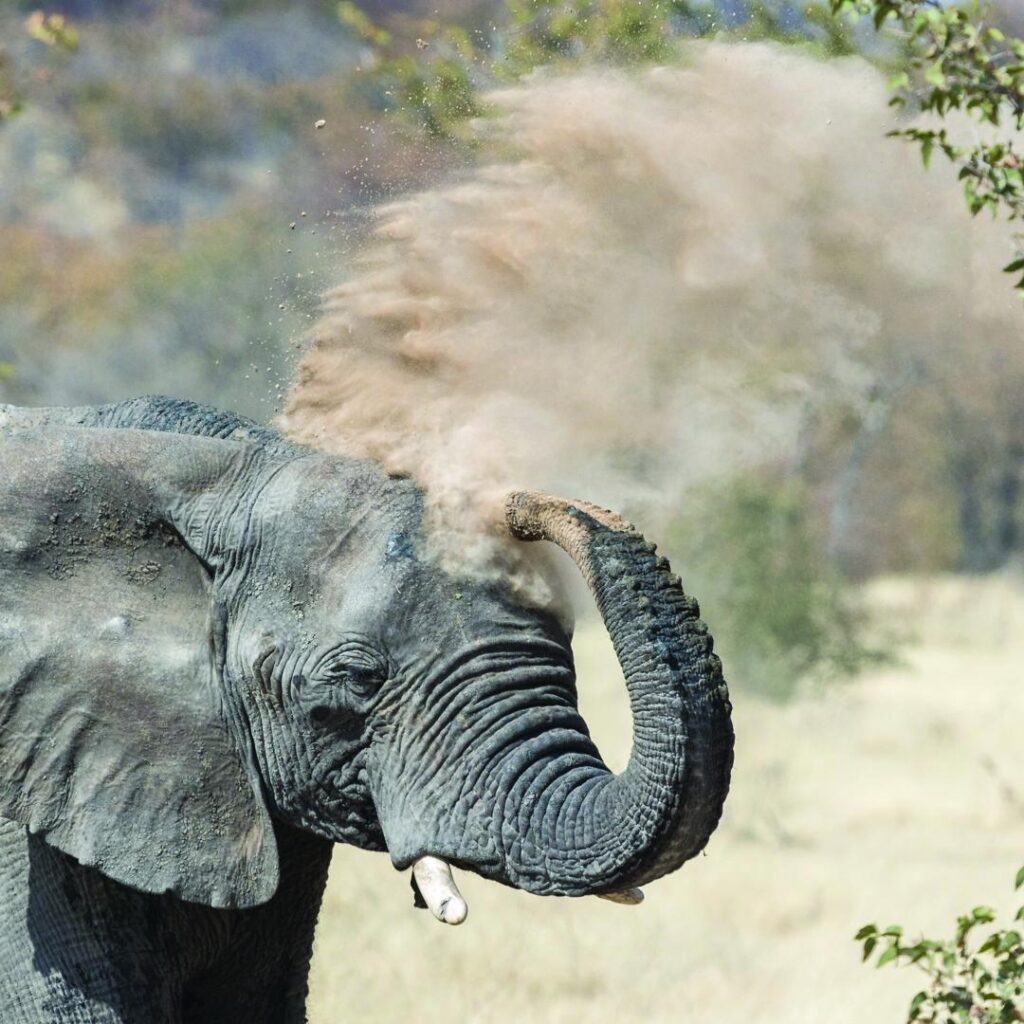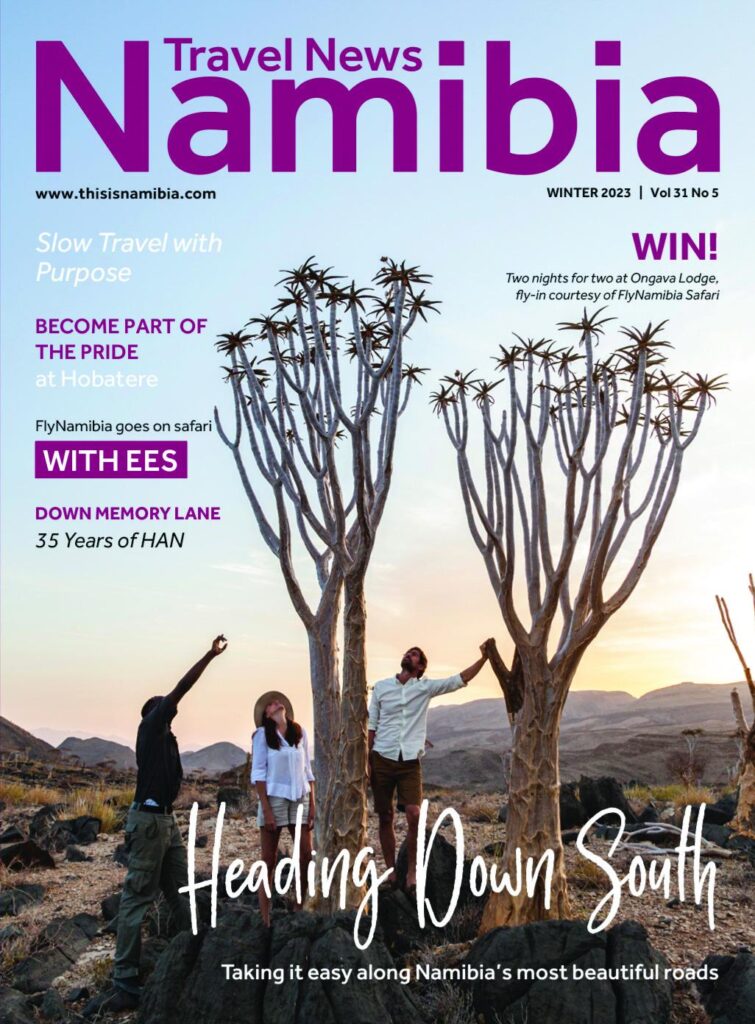

30 years of putting
Nature First
at Ongava
“There are times when solitude is better than society and silence is wiser than speech.”
~ Charles Spurgeon
Text Elzanne McCulloch | Photographs Venture Media
From the Winter 2023 issue
Close your eyes and come on a journey with me. A journey back in time. Imagine it’s the year 1993. Whitney Houston’s I will always love you is probably blaring on the car radio as you drive, Bill Clinton is in the White House, Madiba has just received his Nobel Peace Prize and the western world’s most popular way of appreciating nature is flocking to cinemas to watch Jurassic Park. In our corner of the world, Namibia has just adopted its first constitution. Article 95 stipulates that the State shall actively promote and maintain the welfare of the people by adopting international policies aimed at, among others, according to Section 12 the “maintenance of ecosystems, essential ecological processes and biological diversity of Namibia and utilisation of living natural resources on a sustainable basis for the benefit of all Namibians, both present and future; […].” This made Namibia one of the first countries to include provisions for environmental protection in its constitution.
At about the same time an idea takes root in the central north of Namibia, just south of the border of Etosha National Park. An area predominantly made up of cattle farms. It is here, in this vast and stunning bushveld landscape, that the ideology of a conservation-centred land use model takes shape and breaks away from the status quo. That was how the Ongava Game Reserve was born.
Ongava is a remarkable example of how cattle farms can be transformed into a nature reserve through hard work, dedication and a strong vision for conservation. This stunning reserve in Namibia covers an area of 30,000 hectares. Ongava is located just south of Etosha National Park, and its close proximity to the park has played a big role in its success.
The rehabilitation of degraded habitats in the opening stages of Ongava was marked by multiple setbacks. The major project involved removing internal fences and securing the external boundary, which was crucial to restoring the natural ecosystems and reintroducing indigenous species. The reserve’s first lodge, Ongava Lodge, was officially opened in 1993. The nature reserve’s tourism product was commitment to non-consumptive tourism, such as photographic safaris, from the very start.
Rob Moffett, GM of Sales & Marketing at Ongava, explains that the development of the reserve was not without its challenges. “Good fences make good neighbours”, he says, referring to the scepticism of park authorities in the early stages. The southern boundary of Etosha is also the veterinary coordinate, which is a double fence designed to reduce the risk of disease transmission between species. Ongava invested heavily in mimicking this boundary, building double fences on its external boundaries to avoid human-wildlife conflict. They had to keep their neighbours in mind, some of whom were still cattle farmers. After all, Ongava would be home to big predators.
Despite the challenges, Ongava’s commitment to conservation and sustainable tourism has remained steadfast. Over the years, the reserve has tried to appeal to different segments of the tourism market. For example, an isolated Bush Camp called Himba was developed in a rugged, remote part of Ongava, but it was short-lived. Horse safaris were attempted in the 1990s but also proved unsuccessful. Little Ongava, the reserve’s high-end luxury product, was built in 2001, followed by Andersson’s Camp in 2007. The latter camp was intended to appeal to a broader demographic, including the self-drive market interested in Etosha. However, Andersson’s struggled to find its feet. Ongava’s hospitality principle is to be generous and fully inclusive, while the three-star market that Andersson’s was trying to cater to needed less offerings and frills, and more accessibility at a lower rate.
Ongava has remained a bastion of conservation throughout, and its commitment to preserving wildlife habitats and promoting responsible tourism is stronger than ever. Moffett emphasises that Ongava’s primary focus is on conservation and that tourism is a tool to achieve that goal. “Wildlife comes first, and everything else comes second”, he says.
As part of their vision, Moffett points out two main goals. Firstly, the potential to inspire others in Namibia to adopt conservation as their primary land management choice, in essence providing a model for others to follow. And secondly the potential effect on visitors who come to experience Namibia and its natural wonders. By experiencing conservation efforts firsthand, such influential visitors may be inspired to change their behaviours and encourage others to do the same, resulting in a ripple effect that could reach their network, colleagues, coworkers, families and beyond.
Today, Ongava offers a range of accommodation options, from the luxury of Little Ongava to the rustic charm of Ongava Tented Camp, with Ongava Lodge and the reimagined Anderssons at Ongava in between. The reserve is home to numerous bird species and a large variety of wildlife, including lion, leopard, cheetah, elephant, giraffe and its iconic namesake – rhino. Ongava also has a strong commitment to community development and works with local communities to promote sustainable livelihoods and environmental education.
Ongava is not just a place to see wildlife. It is a place to learn about conservation, sustainability and the incredible resilience of nature. As Moffett says, “We want people to leave Ongava with a sense of awe and wonder, but also with a deeper understanding of the importance of conservation and the role they can play in protecting our planet.” And above all the firm notion that here nature comes first – since 1993 and for many decades forward. TNN
LISTEN AND SEE. ONGAVA.COM
VISIT OUR RESEARCH CENTRE AT ORC.ECO
More to explore


Discover Airlines launches a new direct flight between Windhoek and Munich





